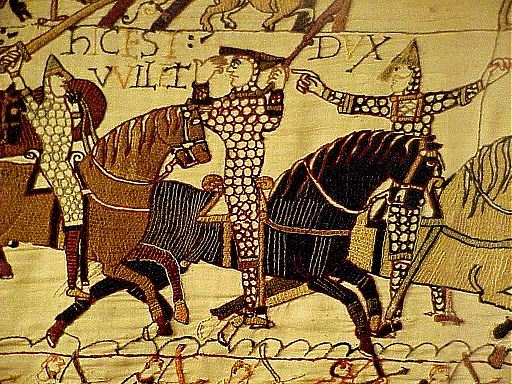 The
Flemish Origins
The
Flemish Origins
There
is no doubt that Charlemagnic blood was for some hundreds of years
after that monarch’s death the elixir of Europe. As late as the
19th century the eminent historian, Sir Francis Palgrave could
write: “Not only throughout the Middle Ages but long after that
era there was a species of mystical pre-eminence attached to the
Carlovingian lineage, which those who could claim the honour nourished, though
often in silence.”
Flanders had been founded early in the 9th century by the
semi-legendary Lideric, who came, said the early chroniclers, from
somewhere in the south of France into a land empty of everything
but forest, and cleared it. This was shortly after the death of
Charlemagne, who had of course been it’s overlord. The marriage
between Lideric’s grandson, Baldwin I, and Judith, daughter of
Charles the Bald of France, brought a respectability and a
strength to Flanders; it also put the magic Carolingian blood into
the veins of the comital house, since the bride was Charlemagne’s
great-granddaughter.
In the 9th and 10th centuries the comparative stability and
prosperity of Flanders caused a number of ancient comtes around
her perimeter to attach themselves to the new power. Among them
were Hainaut, Mons, Louvian, Alost (or Gand), and Guines. Boulogne,
with it’s own subsidiary comtes of Lens, Hesdin and St. Pol, was
also allied to Flanders, as was Ponthieu, away on the Norman
border. All were linked by close personal ties to the comital
family of the Baldwins. All regarded themselves, and were ruled in
1066 by men directly descended from Charlemagne.
Through Lothair, son of Charlemagne’s third son, Louis the Pious,
the counts of Alost trace a connection with the Holy Roman Empire;
Guines was an offshoot of this house via Theodoric, Count of Gand,
a younger son of that count of Alost who had married Lieutgarde,
daughter of Count Arnulf I of Flanders – himself a ruler who was
not only a Charlemagne descendant but had married one in Adela
(some genealogists call her Alix), daughter of Count Hubert II of
Vermandois, whose own great house descended directly from Pepin,
King of Italy, Charlemagne’s second son. The richest Carolingian
ancestry of all was that enjoyed by the Count Eustace II of
Boulogne; not only did he descend, through Ponthieu and Guines,
from Charlemagne’s favourite daughter, Berthe, and the
poet-courtier, Angilbert, who during the emporer’s lifetime had
been given west Flanders to rule over, but he was also the
great-grandson, through his mother, Maud of Louvain, of Charles,
Duke of Lorraine, the last male heir of the Carolingians.
Through all the troubled years after the death of Charlemagne,
Flanders and its subsidiary comets had managed to retain something
of his rule, keeping a living continuity with its precepts which
was in marked contrast with the rest of the Frankish empire. The
castle of the counts of Flanders at Ghent was a somber place,
desperately fortified by Lideric against the Viking invaders, and
expanded in later generations to express a somewhat brutal
strength. His armies and those of his descendants, the Baldwins,
were stalwart, well-trained, and all but unbeatable. About the
chateau at Boulogne there was an altogether different atmosphere,
a sort of luxurious assurance, recognizable as the epitome of
aristocracy, that gave the equally efficient forces there an extra
quality of gallantry and bravura.